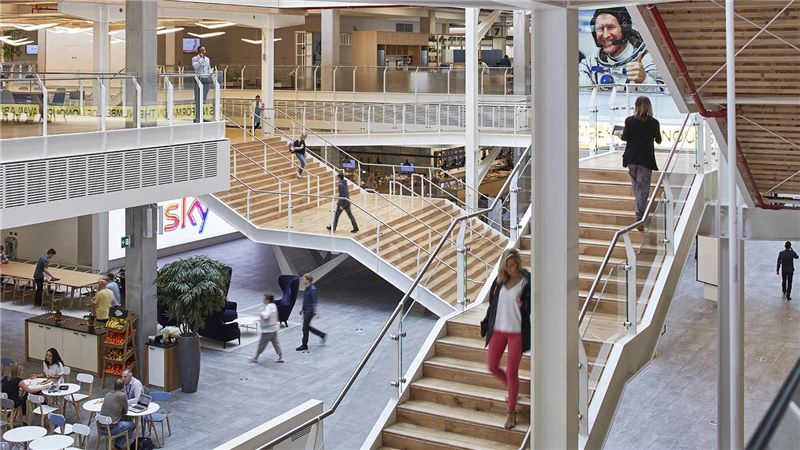The data-centre market is heating up – but can we keep up with demand?
When we think about the cloud, generative artificial intelligence or 5G, we think of abstract things in a digital world. We don’t think of the huge physical infrastructure required to support them.
But these technological breakthroughs that we now take for granted rely on a vast network of data centres: around 10,000 globally. The exponential growth of AI, which is particularly data-hungry, is only going to drive this trend further.
According to real estate advisers JLL, we are likely to generate twice as much data in the next five years as all the data created in the past 10. This will need to be stored somewhere.
As a result, Europe is likely to see demand for data centres quadruple over the next decade. The primary European market that is set to benefit most from this growth is London.
This is great for the capital, but are we able to meet the demand? According to real estate services firm CBRE, the demand for data centres in Europe’s five largest markets exceeded supply in the first quarter of this year. In short, we simply aren’t building fast enough to meet our appetite for data.
Labour made it clear during the election campaign that it wants to make the UK a world leader in AI. This was exemplified by a firm commitment in its manifesto, saying it wanted to unlock tech barriers to enable the construction of more data centres across the country. This included reforming the planning system and allowing more data centres to be built in the greenbelt.
With the new government fresh in office, we have yet to learn the details of these proposals, but they sound promising in principle. However, planning is just one obstacle we face to building more data centres; there are a number of other challenges that the new government will need to consider.
Power and space
The first is around energy demand. Data centres are notoriously power-hungry, and this is only set to intensify with the growth of AI. According to Goldman Sachs, AI will lead to data-centre power demand growing by 160 per cent by 2030. This will require a significant investment in the National Grid. Over time, we need to move towards self-powered data centres using renewable energy. This could include nuclear power such as from small modular reactors. We also need to explore ways of using the heat generated by data centres to warm homes and public buildings.
The second challenge is finding space to build data centres. The areas where data centres are in most demand, such as London, tend to be where land is in shortest supply – and land prices can be as high as £17 million per acre. One way to tackle this is to redevelop industrial spaces and retrofit data facilities, or find ‘edge’ sites that are close to where the demand is but in areas with more space.
Finally, we need skilled people to build these data centres. This is a relatively new market, having developed dramatically over the past 20 years. With the market set to boom, and with growing pressure to deliver facilities quickly to meet demand, there will be a great need for skilled roles.
As well as bringing new people into the industry, we need to build in a more efficient way using offsite methodologies. At Mace, we call this approach ‘construction to production’, whereby components are manufactured in factories and then transported and installed on site. This saves time, reduces waste and optimises labour hours – building better and quicker.
We have a fantastic opportunity to make the UK a world leader in AI and cloud technology, but we need to build more digital infrastructure to do this. Reforming the planning system is a good start, but there is much more work to do to address some of the other barriers.
This article first appeared in Construction News.












